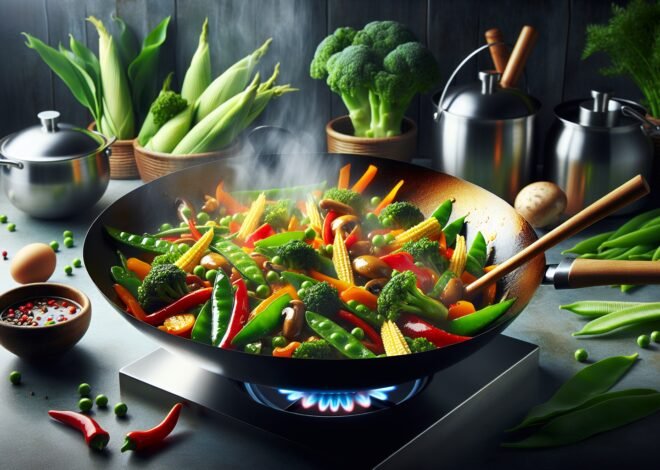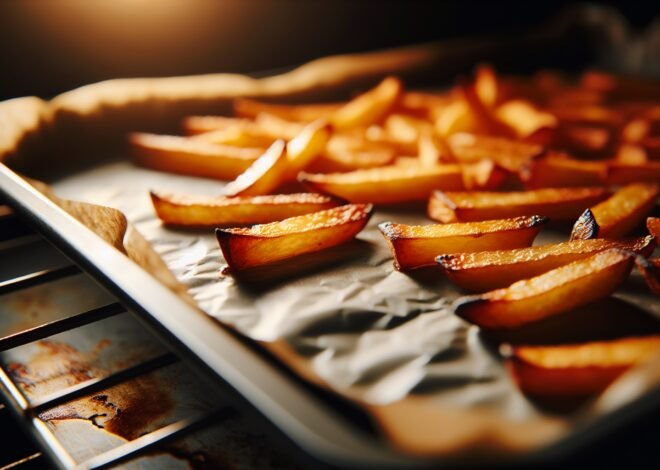
How to Make Gluten-Free Dough for Bread and Pizza
Make gluten-free dough and enjoy bread and pizza without the typical gluten concerns. Did you know one in 133 people in the US has celiac disease, making gluten-free options essential? This guide will show you how to craft the perfect gluten-free dough, ensuring a delicious, satisfying base for your favorite breads and pizzas. You’ll discover key alternative flours, must-have ingredients, and step-by-step instructions to master gluten-free baking at home. Dive in to transform your cooking routine and savor gluten-free goodness without compromise.
“`html
Understanding Gluten-Free Ingredients
Embracing a gluten-free lifestyle begins with understanding the unique ingredients involved. Gluten-free baking requires a fresh approach, especially for those accustomed to traditional dough recipes. The challenge lies in replicating the texture and taste of gluten-rich products. This section delves into the core components of gluten-free baking, focusing on flours, binders, and ingredient balance.
Choosing the Best Gluten-Free Flours for Dough
The foundation of any gluten-free dough is the flour blend. Unlike wheat flour, gluten-free flours vary greatly in texture and flavor. Common options include rice flour, almond flour, coconut flour, and sorghum flour. Each offers unique properties and can transform the final baked product. Rice flour provides a light and tender texture. Almond flour adds a rich, nutty flavor and enhances moisture retention. Coconut flour is highly absorbent and best used in small quantities. Sorghum flour brings a mild, sweet taste and works well in bread recipes.
Creating an ideal flour blend often involves mixing different types to achieve the desired texture. Ratios are crucial. A typical mix might be 40% rice flour, 30% almond flour, and 30% sorghum flour. Experimentation is key, as each flour reacts differently with other ingredients. Understanding these nuances helps in crafting a dough that holds together without crumbling or becoming overly dense.
The Role of Xanthan Gum and Psyllium Husk
In gluten-free baking, binders are essential. Gluten provides elasticity and structure in dough, qualities that xanthan gum and psyllium husk replicate. Xanthan gum is a popular choice due to its ability to mimic gluten’s binding properties. It helps in trapping air bubbles, giving bread a light and airy texture. Typically, about 1 teaspoon of xanthan gum per cup of flour suffices.
Psyllium husk, a natural fiber, offers a similar function. It gels with water, forming a thick paste that binds dough ingredients effectively. This results in improved moisture retention and a better crumb structure. When combined, xanthan gum and psyllium husk can create a gluten-free dough that rivals traditional options in both texture and taste.
Balancing Wet and Dry Ingredients for Perfect Texture
The balance between wet and dry ingredients is pivotal in gluten-free baking. Unlike gluten doughs, gluten-free versions require a different hydration level. Too much liquid can lead to a gummy texture, while too little results in a dry, crumbly product. Achieving the perfect consistency starts with measuring accurately and understanding the role each ingredient plays.
For instance, eggs add moisture and aid in binding. Milk or milk substitutes contribute to the dough’s tenderness. Olive oil or melted butter enhances flavor and adds richness. Monitoring the dough’s texture throughout the mixing process is crucial. Adjustments, such as a splash more milk or a bit more flour, may be necessary. The goal is a dough that is moist but not sticky, with enough elasticity to hold its shape during baking.
Step-by-Step Guide to Gluten-Free Dough Preparation
Crafting gluten-free dough can seem daunting, but with the right techniques, it’s entirely achievable. This section provides a detailed guide, from combining ingredients to the final kneading. Each step is vital for achieving optimal texture and flavor in your gluten-free creations. Follow these methods to transform flour and water into something truly special.
Sifting and Combining Dry Ingredients
Sifting is more than just a preliminary step; it’s a crucial part of gluten-free baking. Sifting dry ingredients, such as flour, baking powder, and salt, ensures even distribution and removes any lumps. It introduces air into the mix, aiding in a lighter texture for the final product. Use a fine-mesh sieve for best results.
After sifting, combine the dry ingredients in a large bowl. Whisking them together further ensures uniformity. This simple action prevents pockets of baking powder or other additives from forming, which could affect the dough’s rise or flavor. A well-mixed dry base sets the stage for successful gluten-free dough.
Kneading Techniques for Gluten-Free Dough
Kneading gluten-free dough differs from traditional methods. The absence of gluten means there’s no need to develop a protein network. Instead, focus on incorporating ingredients evenly and achieving the correct consistency. Begin by turning the dough out onto a lightly floured surface.
Use gentle folding motions rather than aggressive kneading. The dough should start to come together after a few minutes. If it feels too sticky, add a little flour. If it’s too dry, a few drops of water can help. The goal is a cohesive, pliable dough.
Allowing Proper Time for Dough Resting
Resting time is another crucial factor in gluten-free dough preparation. Allowing the dough to rest after kneading gives the ingredients time to hydrate fully. It also aids in flavor development and softens the dough. Cover the dough with a damp cloth or plastic wrap to prevent drying out.
The resting period can range from 30 minutes to a few hours, depending on the recipe. This step should not be rushed. A well-rested dough is easier to shape and bakes more evenly. Take the time to let the dough sit, and the results will speak for themselves.
Baking Techniques for Gluten-Free Bread and Pizza
Baking gluten-free bread and pizza requires specific techniques to achieve the best results. These techniques focus on crust development and flavor enhancement, turning simple dough into delicious creations. Explore how to perfect your baking process, ensuring each bite is as satisfying as possible.
Tips for Achieving a Crisp Crust on Gluten-Free Bread
A crisp crust is the hallmark of a well-baked bread. For gluten-free bread, achieving this often requires a few additional steps. Preheat your oven for at least 20 minutes to ensure even heat distribution. Using a baking stone or a Dutch oven can also help in retaining heat and creating a crusty exterior.
Brushing the loaf with olive oil before baking can enhance the crust’s texture and flavor. Steam is another critical element. Introduce steam in the first 10 minutes of baking by placing a tray of water at the bottom of the oven. This process helps in expanding the dough and developing a golden, crispy crust.
Baking Gluten-Free Pizza for Optimal Flavor
Pizza dough requires a careful balance of ingredients to achieve a flavorful and sturdy base. Start by pre-baking the crust for about 10 minutes before adding toppings. This step prevents a soggy center.
Use high-quality ingredients for your toppings, as their flavors will stand out against the simple dough. Fresh herbs, premium cheeses, and ripe vegetables can elevate the taste. For a perfect bake, rotate the pizza halfway through cooking to ensure even browning.
Storing and Reheating Gluten-Free Baked Goods
Proper storage is key to maintaining the freshness of gluten-free baked goods. Cool the bread or pizza completely before storing. Wrapping them tightly in plastic wrap or aluminum foil helps retain moisture.
For longer storage, freeze the products in a sealed bag. When reheating, use a low oven temperature to prevent drying out. A brief stint in a hot oven can refresh the crust, bringing back its initial crispness and flavor.
“`
This structured content provides a comprehensive guide to gluten-free baking, offering practical tips and techniques for both novices and experienced bakers.
Conclusion
Gluten-free dough requires a mix of gluten-free flours like rice, almond, or oat. Binding agents such as xanthan gum or psyllium husk are crucial to mimic gluten’s elasticity. Proper hydration is key, so dough may be stickier than traditional versions. Rest the dough to allow it to hydrate fully and improve texture. Baking with gluten-free dough may require different temperatures and times for optimal results.
“`html
FAQ
What ingredients are essential for gluten-free dough?
Key ingredients for gluten-free dough include gluten-free flour blends, xanthan gum or guar gum, baking powder, salt, and water. These components help mimic the elasticity and structure provided by gluten in standard doughs.
How can I make gluten-free dough more elastic?
Incorporate xanthan gum or guar gum to enhance elasticity. Adding psyllium husk or chia seeds can also improve dough elasticity, providing a texture closer to traditional dough.
What are the best gluten-free flour substitutes for making dough?
Top gluten-free flour substitutes include almond flour, rice flour, coconut flour, and chickpea flour. Each offers unique flavors and textures, so experimenting with blends may yield the best results.
Can gluten-free dough be refrigerated or frozen for later use?
Gluten-free dough can be refrigerated for short-term use or frozen for long-term storage. Ensure it’s well-wrapped to prevent drying out and allow it to reach room temperature before shaping or baking.
How can I improve the texture of my gluten-free dough?
Using a combination of gluten-free flours, adding eggs or egg substitutes, and incorporating fats like olive oil can improve texture. Adjusting hydration levels can also enhance the final product’s texture.
What common mistakes should I avoid when making gluten-free dough?
Avoid overmixing, which can make the dough tough. Not using enough binding agents like xanthan gum can result in crumbling. Always check for the right dough consistency and moisture level before baking.
“`











